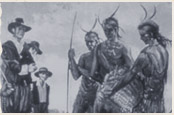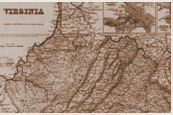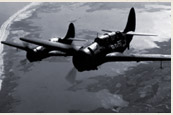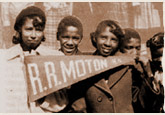Poster Art and WWI Propaganda - Historical Context
PBS: The American Experience
Poster Art and WWI Propaganda - Great Britain
Georgetown University Library: Roger N. Mohovitch Collection
Poster Art and WWI Propaganda - United States
Georgetown University Library: Roger N. Mohovitch Collection
Description: These groups resources illustrate an important feature of modern warfare-- the efforts of governments to mold public opinion among their citizens in ways that will aid the war effort. In some conflicts this may be more necessary than in others. The posters collected here give students the chance to examine these issues, as well as an opportunity to compare the art, methods and ideas for bolstering public morale within Great Britain to those used in the United States.
Teaching Tips:
"Do Now" Suggestion
- Students can examine both the British and the American posters. They could write an informal artistic review of a few of the posters (teachers could pick a selection of posters from both countries) with a focus on the similarities and differences in the posters. In the review, students should focus on how the experiences of the British and the Americans were different in WWI, and how this might have affected the artwork. The teacher could show a few examples of the posters and ask students about the message conveyed through the propaganda. The teacher could then provide current newspapers and ask students if they think there is any propaganda in today's newspapers.
- After students have examined the posters, they could come up with a comprehensive list of the ideas conveyed in the propaganda. At this point, the teacher could lead a discussion on the role of the government and the Committee on Public Information in shaping public opinion. Finally, the teacher can ask students to create their own propaganda posters. It might be interesting to ask them to make a poster from an isolationist perspective.



